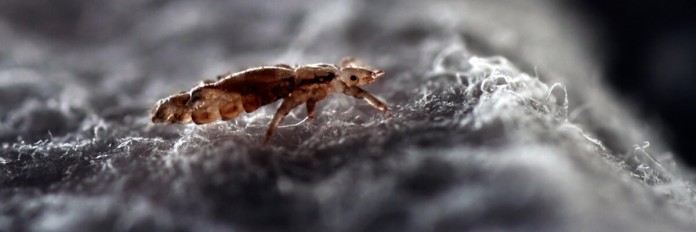STILLWATER, Okla. — As the school year gets underway and students are reunited with old friends while making new ones, an unintended consequence could be increased risk of exposure to head lice.
Children’s risk of exposure to head lice goes up with arrival of a new school year.
“In general, when your child goes back to school, they could have a risk of being exposed to lice because you have kids from different home environments coming together at one focal point,” said Justin Talley, Oklahoma State University Cooperative Extension livestock entomologist.
Year-round concern
While transmission tends to spike in late fall into winter and spring, a child could contract lice at any point in the school year.
“The critical thing is prevention and talking to your child about not sharing their personal items such as combs, brushes and bed linens, especially pillows,” said Talley, who stressed that lice are a common problem throughout the United States.
“Anyone can get head lice. It’s not about cleanliness,” he continued. “It doesn’t matter where you live. It’s a matter of who you come into close contact with.”
Head lice are a blood-sucking insect that can only be transmitted from person to person through direct contact, such as through sharing a pillow, a brush or by having head-to-head contact with someone who has lice.
Direct contact
Examples of direct contact include when one individual’s hair comes into contact with another individual’s hair or someone who is infected with lice combs or brushes his hair and immediately passes the comb or brush to an uninfected person, who uses it.
Infestations can take between five and 10 days to develop after exposure, depending on temperature and the condition of the infested person’s hair.
“If you see your child scratching her head or exhibiting abnormal behavior where she’s flicking her hair or scratching more than usual, then check for lice. School nurses are also trained to identify lice,” Talley said.
How to check
The easiest way to check for lice is to part the hair all the way to the scalp every 2 to 3 inches all over the hair, and especially in the back toward the neck. Head lice range in color from creamy white to brown and are visible with the naked eye.
“They’ll be active, crawling on and near the scalp,” Talley said.
In cases of suspected lice infestation, there are over-the-counter lice control shampoos available. If the infestation is severe or if the over-the-counter product does not work, stronger alternatives may be available by prescription from a medical professional.
Whether over-the-counter or prescription, lice control products typically require two applications — one initially and a second one about 10 to 14 days later.
“Regardless of the product you’re using, the second application is critically important because the first application doesn’t kill the eggs. Reapplying the product after about 10 days allows those eggs to hatch so you’re killing the remaining nymphs,” Talley said.
Families also should launder the bed linens, especially the pillow cases, in the case of possible head lice infestations. Items should be washed in hot water above 125 F and dried on a high heat setting.











As a parent I can say that lice is definitely a big concern! I have found several sites that help parents deal with those bugs, and one of the most comprehensive articles I’ve found was this one: http://headlicecenter.com/head-lice-treatment-basics/ . It tells how to pick a treatment, why some treatments don’t work, why they can be dangerous for our kids, etc. Great resource.